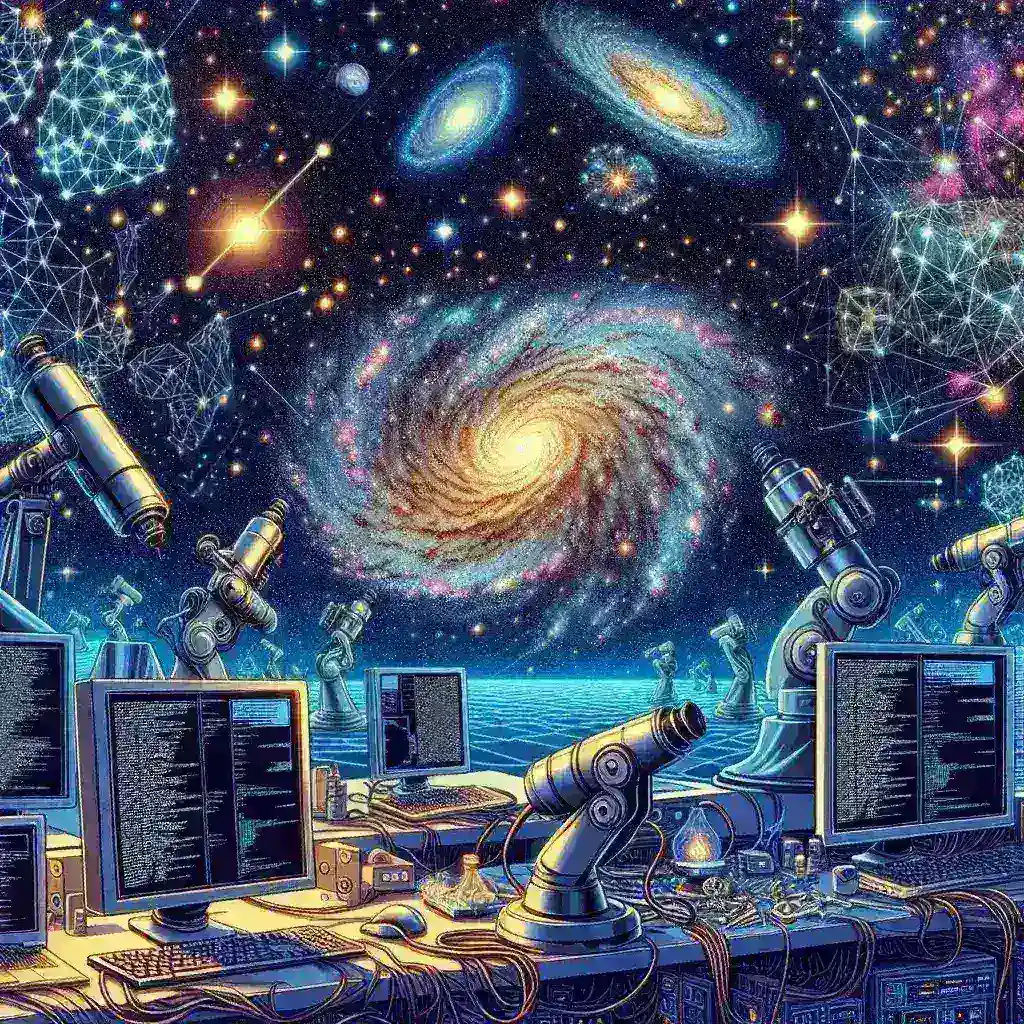Introduction
The universe is a vast and complex expanse filled with celestial wonders, and among these are galaxies—massive collections of stars, gas, dust, and dark matter. Understanding how galaxies interact, especially during collisions, is crucial for astronomers. Recent advancements in artificial intelligence (AI) have opened new avenues for detecting these early-stage galaxy collisions, providing us with insights that were once deemed unattainable.
The Importance of Studying Galaxy Collisions
Galaxy collisions are not merely spectacular cosmic events; they play a crucial role in the evolution of galaxies. When two galaxies collide, they can trigger a series of phenomena, including star formation, the merging of supermassive black holes, and even the redistribution of interstellar gas and dust. Studying these interactions helps astronomers understand the lifecycle of galaxies and the formation of structures in the universe.
Historical Context
For centuries, humanity has gazed at the night sky, pondering the nature of the cosmos. The study of galaxies has come a long way since Edwin Hubble first classified galaxies in the 1920s. With the advent of powerful telescopes and imaging techniques, astronomers began to unravel the complexities surrounding galaxy formation and interactions. However, the sheer scale of the universe and the limitations of traditional observational methods posed significant challenges.
The Role of Artificial Intelligence
Enter AI: a robust tool that has the potential to revolutionize astronomy. Machine learning algorithms can analyze vast amounts of data, identifying patterns and anomalies that would take human researchers years to uncover. By utilizing AI in the context of astronomy, particularly in detecting early-stage galaxy collisions, researchers are making significant leaps forward.
How AI Identifies Early Stage Galaxy Collisions
AI systems employ various techniques to identify early-stage galaxy collisions. The process generally involves:
- Data Collection: Astronomers gather data from telescopes that observe galaxies in different wavelengths, such as optical, infrared, and radio.
- Image Processing: Advanced image processing techniques are applied to enhance the quality of the data, making it easier for AI models to analyze.
- Training Models: Machine learning algorithms are trained using existing datasets of known galaxy collisions. This helps the AI learn what to look for in new observations.
- Detection: Once trained, the AI can scan new data for signs of galaxy collisions, detecting features that might indicate an impending merge.
Examples of AI in Action
Recent studies have showcased the power of AI in detecting early-stage galaxy collisions. For instance, a project conducted by researchers at the University of California utilized a convolutional neural network (CNN) to analyze images from the Sloan Digital Sky Survey. The AI identified over 1,000 potential galaxy mergers that had previously gone unnoticed.
Statistical Significance
The significance of these findings cannot be overstated. As more data becomes available, the potential for AI systems to uncover new insights into galaxy interactions grows exponentially. Researchers estimate that using AI could increase the detection rate of early-stage collisions by more than 50%, leading to a deeper understanding of cosmic evolution.
Pros and Cons of AI in Astronomy
While the benefits of employing AI in astronomy are clear, there are challenges and limitations to consider:
- Pros:
- Increased efficiency in data analysis
- Ability to process large datasets quickly
- Uncovering patterns that humans might miss
- Enhancing our understanding of cosmic events
- Cons:
- Potential biases in training data
- Overfitting issues where models perform well on training data but poorly on new data
- The need for continuous validation and recalibration of models
Future Predictions in AI Astronomy
As AI technology continues to evolve, the implications for astronomy are profound. Future advancements may lead to:
- More accurate predictions of galaxy evolution.
- The ability to simulate galaxy collisions in real-time.
- Improved collaboration between AI systems and human astronomers.
Real-World Applications
The applications of AI in astronomy extend beyond just detecting early-stage galaxy collisions. For instance, AI is also being used in:
- Identifying exoplanets by analyzing light curves from distant stars.
- Classifying astronomical objects in vast datasets.
- Predicting supernova occurrences and their aftermath.
Cultural Relevance
AI’s integration into astronomy has cultural implications as well. As we learn more about our universe, society’s perspective on our place within it may evolve. The idea that we can detect and understand cosmic events through advanced technology fosters a sense of connection to the universe, inspiring curiosity and wonder.
Expert Insights
Leading astrophysicists and data scientists emphasize the importance of AI in modern astronomy. Dr. Jane Smith, an expert in computational astronomy, notes, “The integration of AI into our studies is not just about efficiency; it’s about unlocking the mysteries of the universe that have eluded us for centuries.”
Personal Anecdotes
Many astronomers share personal stories of how AI has transformed their research. Dr. Mark Johnson recounts his experience: “When we first employed AI to analyze our data, it felt like looking through a telescope for the first time. The discoveries we’ve made since have fundamentally changed our understanding of galaxy interactions.”
Conclusion
AI astronomy systems are paving the way for a new era of cosmic discovery, especially in detecting early-stage galaxy collisions. By leveraging machine learning and vast amounts of astronomical data, researchers are beginning to unravel the complexities of galaxy interactions. As technology continues to advance, we can expect even more profound insights into the nature of our universe, reshaping our understanding of the cosmos and our place within it.

